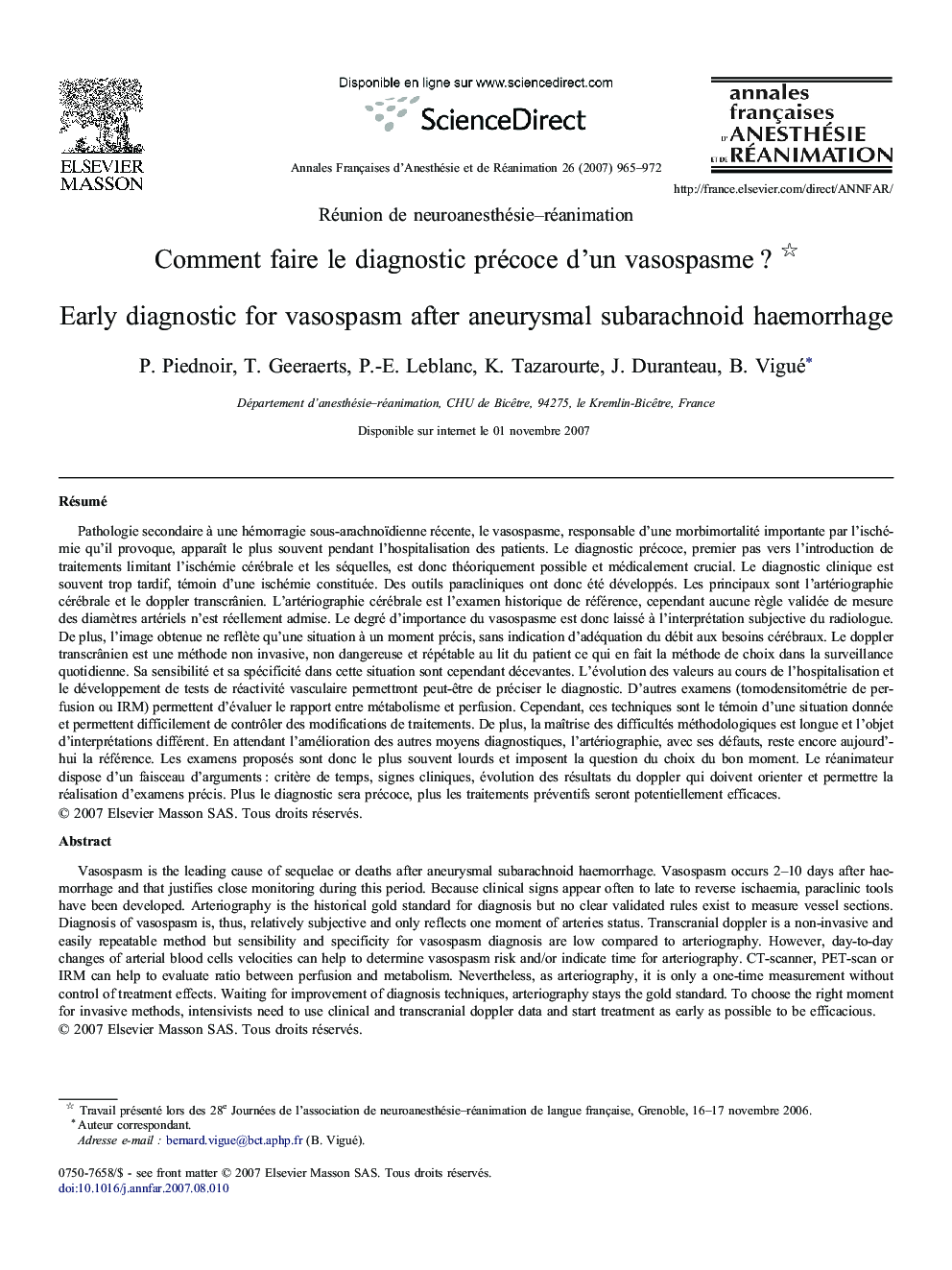| کد مقاله | کد نشریه | سال انتشار | مقاله انگلیسی | نسخه تمام متن |
|---|---|---|---|---|
| 2747584 | 1148918 | 2007 | 8 صفحه PDF | دانلود رایگان |
عنوان انگلیسی مقاله ISI
Comment faire le diagnostic précoce d'un vasospasme ?
دانلود مقاله + سفارش ترجمه
دانلود مقاله ISI انگلیسی
رایگان برای ایرانیان
کلمات کلیدی
موضوعات مرتبط
علوم پزشکی و سلامت
پزشکی و دندانپزشکی
بیهوشی و پزشکی درد
پیش نمایش صفحه اول مقاله

چکیده انگلیسی
Vasospasm is the leading cause of sequelae or deaths after aneurysmal subarachnoid haemorrhage. Vasospasm occurs 2-10Â days after haemorrhage and that justifies close monitoring during this period. Because clinical signs appear often to late to reverse ischaemia, paraclinic tools have been developed. Arteriography is the historical gold standard for diagnosis but no clear validated rules exist to measure vessel sections. Diagnosis of vasospasm is, thus, relatively subjective and only reflects one moment of arteries status. Transcranial doppler is a non-invasive and easily repeatable method but sensibility and specificity for vasospasm diagnosis are low compared to arteriography. However, day-to-day changes of arterial blood cells velocities can help to determine vasospasm risk and/or indicate time for arteriography. CT-scanner, PET-scan or IRM can help to evaluate ratio between perfusion and metabolism. Nevertheless, as arteriography, it is only a one-time measurement without control of treatment effects. Waiting for improvement of diagnosis techniques, arteriography stays the gold standard. To choose the right moment for invasive methods, intensivists need to use clinical and transcranial doppler data and start treatment as early as possible to be efficacious.
ناشر
Database: Elsevier - ScienceDirect (ساینس دایرکت)
Journal: Annales Françaises d'Anesthésie et de Réanimation - Volume 26, Issue 11, November 2007, Pages 965-972
Journal: Annales Françaises d'Anesthésie et de Réanimation - Volume 26, Issue 11, November 2007, Pages 965-972
نویسندگان
P. Piednoir, T. Geeraerts, P.-E. Leblanc, K. Tazarourte, J. Duranteau, B. Vigué,